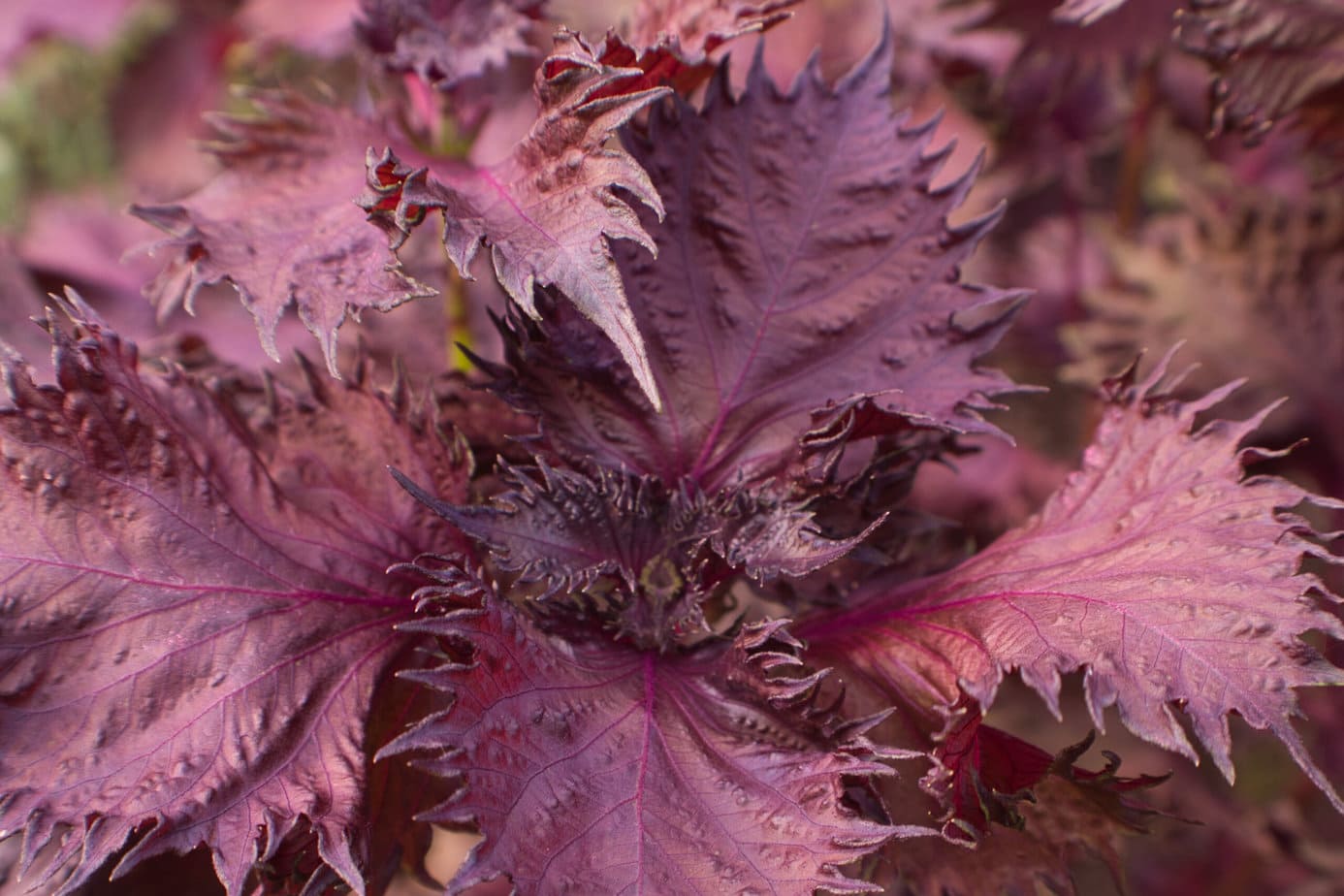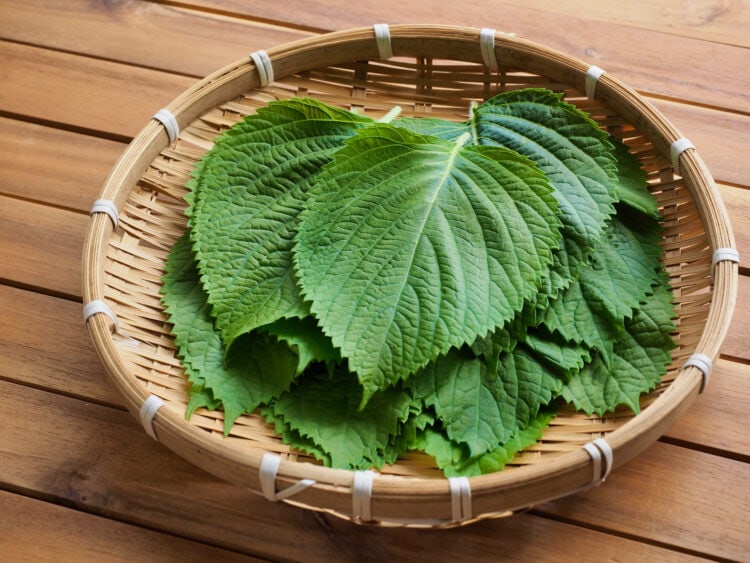You may have already seen these small green leaves adorning your plate. Make no mistake… Shiso, still very little known in our regions, closely resembles mint or basil, both in appearance and taste. It’s an extremely versatile plant that can harmonize with a good number of dishes. Let’s explain.
What is Shiso?
Shiso, also called perilla or beefsteak plant, is an aromatic herb from the same botanical family as mint… Hence the confusion! It looks like mint, with bright green leaves and serrated edges. In Asia, it traditionally accompanies sushi or sashimi and also serves to separate elements on the plate, notably to prevent flavors from mixing.
Perhaps you’ve noticed it in Asian restaurants… In addition to its ornamental and gustatory qualities, shiso leaves also have preservative properties. The phytoncides it contains help prevent the deterioration of foods it wraps. The Japanese use these leaves to preserve raw fish or seafood.
Where Does Shiso Come From?
Native to Southeast Asia, shiso takes root in the plains of the Himalayas and up “to Burma. ‘Shiso’ actually means ‘purple plant that revives’. In China and Japan, it has been cultivated and consumed since antiquity. It was only in the 1800s that it was exported to the United States, where it was first used as a spice before” being used as an antiseptic for meat… Hence its surprising nickname for some, “beefsteak plant”.
What Are the Different Varieties of Shiso?
There are two types of shiso leaves: green ones and red ones. Needless to say, the green ones are the most commonly encountered.
In addition to differing in color, they also differ in flavor. Red shiso is designated as the “pure” form of shiso. More bitter than the green, it is mainly used as a food coloring, allowing foods to be tinted a beautiful reddish-purple color.

In Asia, green shiso is considered a sacred plant, as it is said to eradicate the effects of food poisons.
What Does Shiso Taste Like?
Green shiso leaves have a citrusy taste, with notes of cinnamon, clove, parsley, and mint. Red shiso, on the other hand, is similar to cumin.
What Are the Benefits of Shiso?
Shiso is known for its anti-allergenic, antibacterial, and anti-inflammatory properties. Consuming it may prevent colds, flu, and coughs that assail us during the winter period!
It is also rich in antioxidants and omega-3, which contribute to the proper functioning of the cardiovascular system.
How to Use Shiso in Cooking?
Much more than a simple garnish, it’s often used in the preparation of sushi or temaki, spring rolls or pho. You can also enjoy shiso by wrapping a leaf around a piece of sashimi, accompanied by a little soy sauce.

Shiso actually pairs very well with dishes based on shellfish or fatty fish, such as salmon, amberjack, or tuna. It’s also mixed into drinks, fruit or vegetable salads, to add a fresh note. Sometimes, it’s made into tempura. When dried and ground, it can be used as a seasoning and sprinkled on noodles, like zaru soba, on furikake, on soups and broths… In Asia, it’s used to prepare shiso maki, where shiso leaves wrap a mixture of sweet miso paste with other ingredients, such as eggplant and roasted nuts. The maki are then skewered and fried. Finally, the uses of shiso leaves are multiple, in both savory and sweet preparations.
How to Replace Shiso?
Given their numerous similarities, both in terms of appearance and taste, shiso can be replaced with mint. Both belonging to the Lamiaceae family, they share the same refreshing effect. Similarly, Thai basil can also be a good substitute. If you don’t have any of these ingredients, I recommend using grape leaves or cilantro.
Where to Find Shiso?
You can find fresh, dried, or frozen shiso leaves in most Asian grocery stores. However, keep in mind that dried shiso has a milder flavor than fresh shiso.
Some supermarkets also offer it, but this is not always the case.
How to Store Shiso?
Fresh shiso must be stored in the refrigerator. You can keep it for a few days. If you can’t consume it quickly, you can always freeze it. Dried shiso should be stored in an airtight container away from light.

